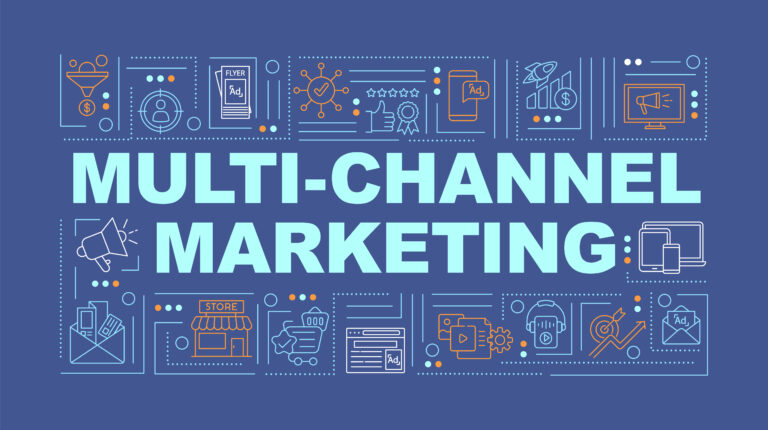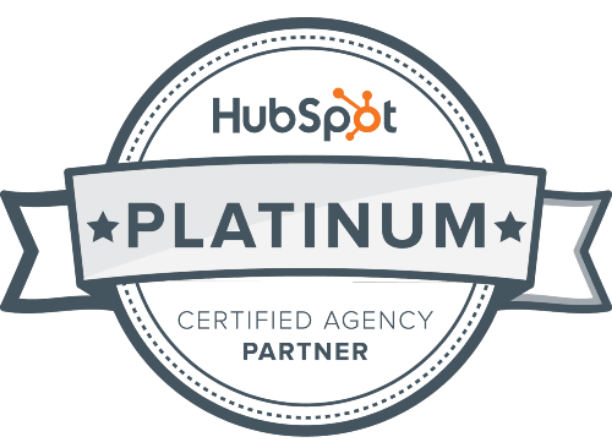So. About those Facebook ads.
Sure, they’re going where potential customers still flock—Facebook had about three billion monthly active users in mid-2023, according to Statista, so it’s still the most used social network worldwide. (Those “Facebook death spiral” headlines might’ve been greatly exaggerated.) But do your Facebook ads convert?
It’s been an interesting time for the social media advertising platform and for the small/medium/large businesses and digital marketing specialists who fraternize with our forever-frenemy, Meta Business Suite. Parent company Meta maintains a mighty ability to connect businesses with their target audience, between Facebook and its image-centric sister, Instagram. But it’s a big, loud landscape. Randomly dropping digital ads into the Meta sea certainly didn’t splash money back out in 2023. And it won’t in 2024 or 2025, either.
At least 160 million businesses are using Facebook to communicate with their audience every month. So, as they (sort of) say, in such a crowded space, no one can hear you scream… unless, of course, you know how to optimize your Facebook ads.
Think of optimization as your volume knob, your megaphone, the big Gary Busey cutout you carry around so friends can find you at Lollapalooza. By strategically tweaking your Facebook ad campaigns, you make sure your ads rise above the noise, captivating your target audience and driving measurable results.
Cue the crowd: “But how?” Snapshot’s Digital Team spends thousands of hours fighting with Meta Ads Manager (so you don’t have to), and here, we’ll dive deep into the Facebook ad ecosystem, break out the best practices, and help you develop your own data-driven strategies to refine your campaigns for maximum ROI.
Making Sense of the Facebook Ad Ecosystem
Before we get into the details, let’s zoom out and focus on foundational tasks: setting up campaign objectives and targeting, which define where you’re aiming and why; then implementing conversion tracking, so you know whether you hit the mark.
- Campaign Objectives and Targeting
Facebook Ads aren’t an off-the-shelf purchase. To deliver, they need a refined, personalized, focused purpose. That’s where campaign objectives come in.
Are you looking to up your profile and make your company’s name more recognizable? Opt for reach or brand awareness campaigns. Need website traffic or to fill the top of your marketing funnel via lead generation? Conversion campaigns. If driving online sales or app downloads are your KPI, conversion optimization comes to play.
General direction, unfortunately, isn’t enough. You need precise coordinates in a space this crowded. And that’s targeting—a trusty, finely tuned compass, with your ideal audience as its true north.
Facebook offers well-defined targeting options, letting you zoom in on demographics like age and location, interests like fitness and food, and lots more. You can use Facebook’s Custom Audiences to re-engage and retarget website visitors or upload existing customer lists for pinpoint reach, too.
The more you try and test audience targeting, the better and more comprehensive data you’ll have—which lets your targeting get more and more effective.
- Meta Pixels: Tracking Conversions for Insight
When it comes to Facebook Ads, what you don’t know can definitely hurt you. Or hurt your budget and results, anyway. The Meta Pixel is your source of truth, telling you exactly what’s happening with and to your ads so you can transform clicks and impressions into actionable insights.
“Pixel” is a little bit misnomer, a little bit clever branding—it’s not a .26 mm dot, but an itty snippet of code that’s unique to your account, embedded in your website to track conversions like website visits, purchases, and lead signups. Without the Meta Pixel, you’d make guesses—every Facebook ad click and dollar spent might be a dead end, and you’d never really know.
The Meta Pixel does more than count conversions, though. It delivers a deluge of valuable data, showing you precisely which audiences, ad formats, and even specific creative elements drive the best results.
Optimization is what you want, and this data is how you get there. With it, you’re able to continuously refine your campaigns and maximize your ROI.
Pixel-perfect pro tip: If you’re having trouble, the Meta Pixel Helper extension for Chrome is an easy way to verify and troubleshoot your Pixel implementation.
Crafting Creative That Converts
Once you’ve defined and refined the basics, it’s time to tap into creativity. No matter how precise your targeting is, there’s still a ton of competition—you might’ve targeted your way out of Times Square on New Year’s Eve, but you’re still probably in the middle of Taylor Swift’s Eras Tour, night two in Nashville. Your tiny billboard has to grab attention, spark curiosity, and inspire action while a whole lot of other stuff is going on.
To do all that, you’ll need to write compelling ad copy and create visuals that turn passive scrollers into probable customers.
- Hooking Your Audience with Copy
Words can command attention, but they also require attention. So your job as a Facebook ad copywriter is to use words wisely, focusing directly on your audience and the benefits you provide—not the features you’d put on the back side of packaging.
Here’s a famous example of that idea in action:

Image: Apple
Apple could’ve lined up the original iPod’s 5GB of storage, two-inch display, and 6.5 oz. weight. They didn’t. They beamed the benefits: Carry 1,000 songs in your pocket.
People cite that ad as genius copywriting (and genius marketing) all the time, because it’s a perfect picture of what we’re trying to do: clearly and engagingly define why the product we’re pushing is interesting, different—better. The goal is to paint a picture, evoke an emotion, and spark desire.
A few ad copywriting practices that can focus your efforts:
- Aim for punchy headlines that pique curiosity, with concise descriptions that highlight value.
- Ditch the industry jargon and use words your audience uses. (But if your B2B audience loves jargon, strike that first part and let your “hyperautomation” fly.)
- Ask questions that your product or service answers.
- Tell a story. If you can invite your audience into your brand’s world and let them feel its impact, it builds connection.
- Remember a call to action, or CTA. It takes the guesswork out of next steps for your audience. Tell them what to do next to get the benefits, whether it’s visiting your website, contacting your company, or making a purchase.
With digital ad copy, A/B testing is a key tactic too. Experiment with headlines, copy formats, and CTAs, see what gets the best response, and use that data to refine and inform.
- Designing Images and Videos that Stop the Scroll
Social media is a visually driven experience, and if you don’t deliver imagery that grabs attention, that story you’re telling with your copy has no chance.
Keep these in mind when you’re working through ad visuals:
- Start with high-quality images and video footage. Blurry/shaky stuff tends to scream unprofessionalism and erode trust. (Unless you’re a brand/creator with a particularly “authentic”/handmade bent and low-res visuals align with your branding. Then get weird—your audience expects it.)
- As with copy, let your audience lead. Use visuals that speak to their interests and ideals and reflect your brand’s personality. Random stock photos make users’ eyes go glassy faster than you can say, “Cheeeeese!”
- Play with formats. Images, videos, carousels, and collections have different strengths and weaknesses and let you tell your story in different ways.
- Don’t forget the feels. Positive emotions—joy, curiosity, humor—create memorable connections.
Professional graphic designers and videographers are huge assets, but if your budget doesn’t allow for that kind of creative power, you still have options.
Meta offers inspiration and ideas in its Meta Creative Center, built-in templates in Ads Manager, on up to more advanced tools like Spark AR. User-friendly design tools including Canva and CapCut are great for graphics and videos on a budget, too.
Leveraging user-generated content—customer testimonials, reviews, unboxing videos—also make for entertainingly authentic and budget-friendly assets.
Optimization: Testing and Tweaking for Success
With a focused framework and creative in place, you’re ready to fine-tune your Facebook ads into high-performance, revenue-generating, KPI-hitting wins.
Fair warning: This part gets granular.
- Bidding Strategies: Playing the Facebook Ad Auction Game
From the outside, it might look like Facebook has unlimited space. But Facebook does not, in fact, go on forever. So getting your ads placed means bidding in an ad-space auction, essentially.
That doesn’t mean you have to outspend your competitors to get on the board. It just means you’re strategically allocating your budget. The platform includes a different bidding strategies, and each has its own strengths.
- Automatic bidding: Meta manages bidding based on your goals and budget. If you’re new at Facebook ads or your targeting is broad, this is probably your pick.
- Manual bidding: Set your own maximum bids for impressions, clicks, or conversions. This gives you more control, but requires more expertise.
- Target CPA (cost per acquisition): Tell Facebook how much you’re willing to pay for a conversion and let it optimize. If you’re aiming for specific actions, this is a great option for maximizing ROI.
The right bidding strategy depends on your goals, budget, and comfort zone. It’ll take experimentation and analysis to discover what works best for your brand and your campaigns.
- Audience Refinement: Finding Your People on Facebook
No target audience is a monolithic. Yours—and everyone else’s—breaks up into smaller subgroups based on interests, behaviors, and even past interactions with your brand. The process of audience refinement is, in some ways, getting your bullhorn in the right space, then pointing it in the best direction.
How you’ll refine on Facebook:
- Lookalike audiences: Let Meta find users who have specific characteristics in common with your existing customers or visitors.
- Exclusion targeting: Weed out folks who don’t want or need your message, like people who already converted or have shown no interest in your past ads.
- Retargeting: Circle back around to users who showed interest in your brand, offering a friendly, gentle reminder of your value and nudging them further down the funnel.
This is a process, and it takes steady analysis and updates. But the more you refine, the more you’ll see your ads reaching the right people at the right time and delivering higher ROI.
Measuring Success With Metrics That Matter
Once all that prep work is done and your Facebook ads are live, how do you know if they’re doing the job? By utilizing metrics, in the right measures and manner.
So-called “vanity metrics” can be fun, when your ads are delivering lots of clicks and impressions. But the real story is in the metrics that actually and directly impact your brand’s bottom line. Like these:
- Conversions: when your ad turns into that goal you had—pulling in a lead or making a sale.
- ROI (Return on Investment): the ratio of profit to ad spend. This puts how effective your Facebook ads are into unambiguous numbers.
- Cost per Acquisition (CPA): the price you pay for each conversion. You want this metric to shrink to show efficiency, but remember to check industry averages so you don’t drive yourself crazy.
These numbers offer the answers you need with no filler, no fuss. Did your brand awareness campaign build awareness? Did your lead generation ads invite leads? Numbers don’t lie (though sometimes they do require a little bit of context).
A little more to mine on the data front:
Use Facebook’s Attribution window to understand where and when conversions got tipped (think assisted versus last-click attribution). And don’t sleep on integrating your Facebook ads data with your CRM or analytics platform. That gives you a holistic view of how your online efforts impact your overall business goals.
Build a Social Ad Success Story With Snapshot
Facebook Ads can be a powerful part of almost any brand’s digital marketing strategy. But they do take time and expertise to do right.
If you’re looking to get a Facebook ads campaign off the ground—or want an ongoing marketing partner to manage your whole digital advertising strategy—we’re here and ready to help. Contact the Snapshot team and let us know what you need.








